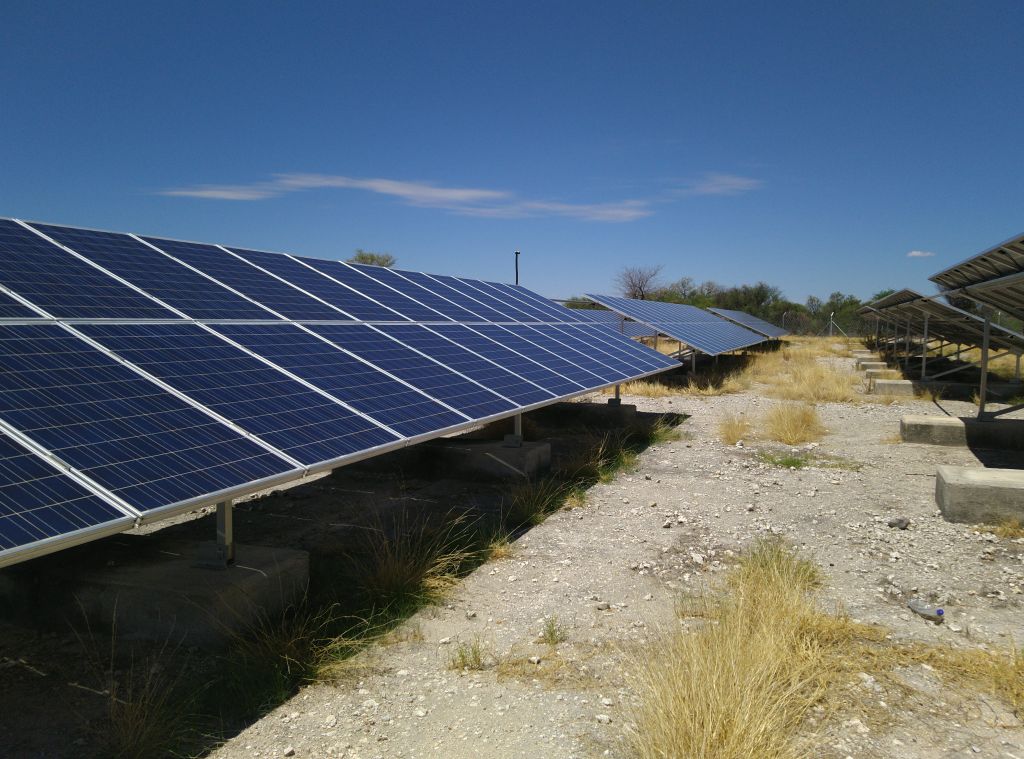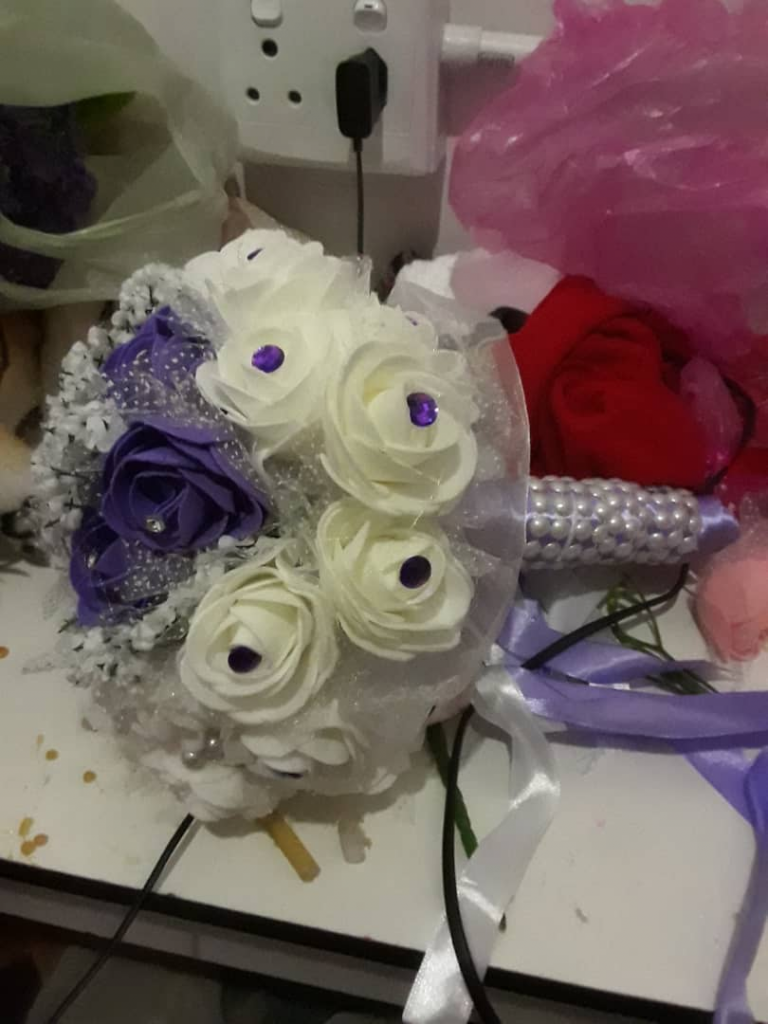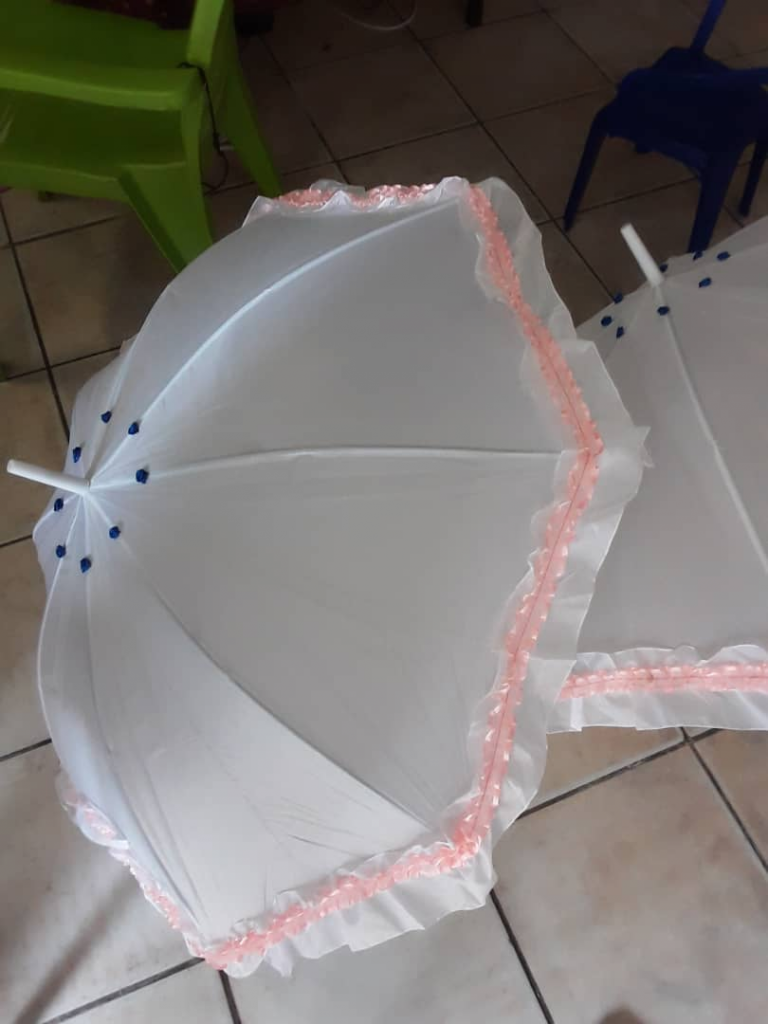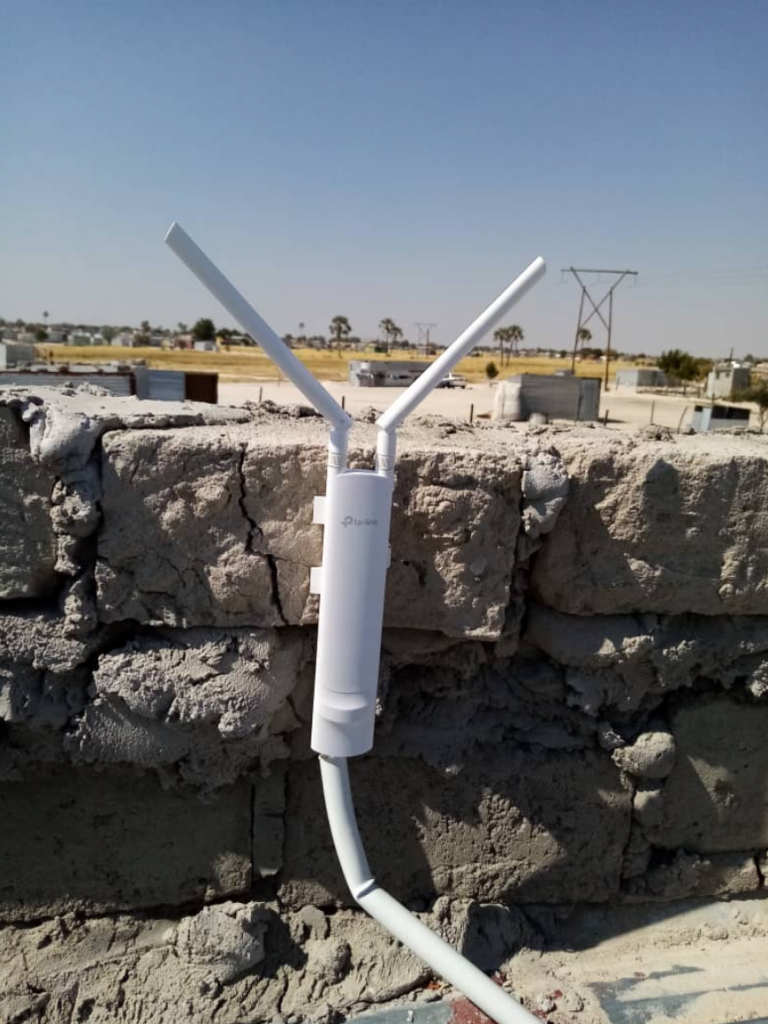Antti Pinomaa, D.Sc.(Tech.), Post-doc Researcher, LUT University

So after 50 laps of one year long marathon we were on our last rounds in the end of November. Next week was the scheduled trip to Oniipa, Namibia, preparations for the trip was made, components for the pilot system packed to three suit cases of the research group persons (utility box, battery box, solar PV box, tools, wires, bettery cables, circuit breakers, box-computers, etc.), pilot components (panels sponsored by Solar Finland with cables delivered from Finland, inverter and batteries ordered from markets in Namibia and South Africa) were told to be ready in Namibia end ready waiting for us.
We started the trip Friday 29th November 2019 by gathering to Helsinki airport with the plan to get the hardware to the plane cargo. First set back came when we went to check-in and the bags weight were measured. One bag exceeded the weight limit and we needed to do rearrangements to distribute the weight to other bags. Prof. Nieminen took battery cables and back metal plates to his carry on bag so we got in. We flew via Doha to Windhoek and in Doha airport our solution when distributing the hardware to carry-on bags stroke bag. The terminal offices in security check spotted something in Prof. Nieminen’s bag and asked where are you heading to, and as the answer was a “no-stay-in-Qatar”, but a travel all the way to Namibia, there was no problem. Go there with you stuff.
So we got loose. During the another long flight to Namibia, we felt bad how much we again produce CO2 emissions to air and wanted to compensate that. So instead of taking the flight meal with meat, we took the vege-version, and felt less environment criminal.
The next obstacle was our arrival to Windhoek and the transillumination checking all the bags coming to the country. And we had lot of iron and components there. We were fortunate to have Dr. Karin Fröhlich, a native Namibian with cultural understanding and language ability with us in addition to the invitation letter from our the local technical university NUST describing our collaborative piloting plans. So, after all, we were able to enter the country.
First day in Namibia Saturday 30th November we got invited by Prof. Erkki Sutinen from University of Turku, who is currently living in Windhoek, to have a dinner at his house and discussed about possible research collaboration in future. Next day Sunday 1st of December we started our trip to Oniipa and drove there via Etosha National Park, stayed a night at a lodge in Okaukuejo, and next morning drove through the Etosha National Park to Oniipa, where we arrived Monday 2nd December. Next morning Tuesday 3rd December we started the piloting project first by visiting the Oniipa Town Council office where we meet the beneficiaries first time, and plan the week. After that we visited the site, plan the routes for the underground cables between the houses, and then went to a warehouse of local transport company, where the solar panels and cables from Finland were. So all looked good as can be seen in figure below.

Unfortunately, this was the part for the good news, as we heard that the inverter and the batteries, similar what we have in the laboratory pilot system at LUT University campus, had not arrived, are stuck in the customs or else. And we heard that the supplier of the goods will look some alternative and temporary inverter and batteries to the site. Moreover, the solar panel mounting brackets were not there yet. But it was promised that those should arrive there next day. So we went to buy the Wifi router to serve the connectivity part of the concept. We heard there should be 3G mobile network coverage at the pilot site, and due to some changes in the project consortium and delays caused by that we did not have the Nokia Kuha BTS with us. In the evening in the hotel lobby, we supply voltage to the utility box comprising terminals to the maximum-power-point tracker (MPPT) inverter unit, and the five AC outputs via energy meters and controllable loads to each customers, with the local server in having all the monitoring and control algorithms in, and this way together with the 3/4G router we had finally found see that does the system connect and become online visible to the cloud. And it did, just like that out-of-the-box as planned. So, after all some good news after having some setbacks earlier during the day.

Next day Wednesday 4th December only two days before the Finnish independence day, we took the power cables with us and went to the site. The beneficiaries had started the digging the ditches for the cables between the houses and finalized that in afternoon. We were already calling off the day, when it started raining and we decided that now or never as after rain the ditches would have been full of water. So the underground cabling was started that day in rain. After several hours all the cables between the houses were in the ground and we started burying them. All the work was done jointly us participating to the cabling work together with the beneficiaries and the surrounding community. After a long and wet day, we could finish for that day. And doing that the very same day was the right call, as it rained heavily also afterwards. And yes, the inverter and battery didn’t arrive that day and we kept waiting.

Thursday 5th December, we got a call from OTC office that the battery and inverter and the mounting system for the panels had arrived. So we got those to our hands finally. Moreover, during that day the panels and those mounting system were installed on the roof of the main house. Now as we got the inverter and batteries, only things not clear were, uncertainty of the temporary components and how those could be integrated to our control system. The other thing was that we need a lockable casing for all of these components to run those with compliance of electrical safety regulations. There was one welder for the job and we went to met him and give specification and dimensions for the case. Should be ready for the next day. Sure thing.

In the evening we tried to get access to the temporary inverter and battery, but it became clear that we couldn’t as there were not the correct data cables with the devices and that the battery and the inverter were not compatible in terms of connecting those together. There were four LEDs in the battery indicating the state of charge level of the battery. Thus, and after many tries it became clear that basically we cannot get anything out of the inverter with this very short time window, and only information we get out of the system is the energy consumption readings. We just had to assume that the battery would be full each day then, if we could be able to get the system up and running. Moreover, the solar panel total power and the battery capacity was half of the planned one due to smaller battery and the inverter could only withstand six panels in one string to be connected to it.

Next morning Friday 6th December, the big day to launch the pilot system according to the set plan, we went to the site with high hopes. The local electricians were doing the cable terminations to each house switchboards and the internal wirings, and the protective earth cable and anchoring installations. Each house got few sockets and light bulbs. So everything looked good, but then when we went to see the casing for the components, it was not yet ready, and moreover it was build like wrong and opposite way, but we were told it will be ready afternoon. Thus we carry all our components to the site and waited there the casing to arrive. It finally came but it was so late, getting dark, and without electricity and light, or local work force, it was no good idea to start the work that evening. Besides there were people living in the main house and going to work next day early in the morning. So we missed our initial plan, but decided to have new try next day.

Next day 7th December, we went to do the job. The day was full of challenges, delays, waiting for tools and electrician, missing components to attach the panels, and list continues. Also the press was called already to the site to do news to the national TV. We needed to postpone the schedule for that few times. Finally in the evening, when I was fasten with screws, the very last one, press car drove to the house yard, but luckily before they go in we could test that the light bulb is switched on and it did. Then right after that have recoreded talk to reporter of what we are doing here, give short introduction to our project and present the just installed pilot system. After they have left, the system commissioning was done by electrician who also finalise the installations in the houses, and we went to a dinner but came back to the site and it was very nice to see the lights in each of these five house on. We also visited each house to see the feelings, and those were very positive. So we did something very concrete here, provide electricity to the community for the first time, electricity something considered self-evident for majority of people living in the developed countries. And add to providing a internet access. So mission accomplished, and late that evening I took a cold beer.


Sunday 8th December, we packed our bags and leaved our hotel, but went to see the site on our way. We found out that the electricity had run out from the batteries and not charged by the solar panels. So we needed to call the electrician back to check the things, and it became clear he had connected the panels in a wrong way, differently what we had told. So he fixed the connections and the batteries started to charge. Also at the same time we did some final system checks of our control system and those worked well. However, this last minute hassle caused four our delay to our schedule and it was dark when we arrived to Windhoek the same late evening. But luckily we went to check the site and the system, as now we could leave the country with peace of mind knowing the system is in operation. When sitting next morning in a plane heading home back to Finland, and looking back the whole and very long week, it anyway was worth it, as now we have the system up and running and only one day before the planned day. This was one of the main milestones and outcomes to the Fusion Grid project as now we were able to start collecting the user experience data from the electricity use, and base on those develop the system further. Over and out.













